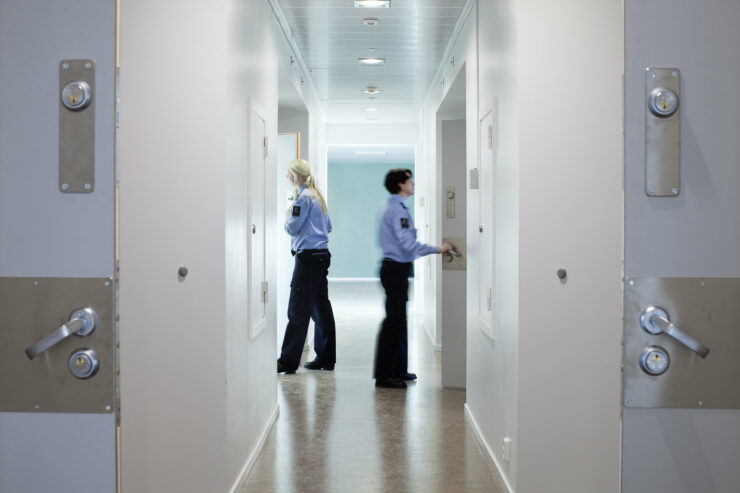By Rose E. Boyle and Pernille Nyvoll

As two prison researchers starting fieldwork in 2021, we were consequently told that we “arrived at a bad time”. Every prison was struggling with the COVID-19 pandemic, limited budgets, an increasingly challenging prison population, as well as different internal struggles. Crisis and emergencies in Norwegian prisons were also regularly depicted in the media, such as the increasing use of solitary confinement, deteriorating facilities in desperate need of renovation, mental health problems amongst both prisoners and staff, and violent incidents. At the heart of all these difficulties, one core problem stood out – understaffing.
During our data collection, prisoners and staff from different prisons confirmed daily the negative impact of understaffing and under-resourcing on prison life. The problem of understaffing arose before the pandemic and has continued despite the lifting of COVID-19 restrictions. Life has returned to ‘normal’, yet the crisis of understaffing in prisons has failed to resolve, despite an ongoing stream of media reports, policy documents and research highlighting this issue.
Budgetary cuts
The ‘debureaucratisation and efficiency reform’ (ABE-reform) often shoulders the blame for the Norwegian Correctional Services’ poor economic situation; a reform mandating all government agencies to reduce operating expenses annually by at least 0.5%. Critics suggest that this reform force agencies to reduce staff and limit services, and political opposition calls it budgetary cuts in disguise.
Given the indisputable crisis within the prison system, recruitment and retention of qualified staff has been challenging in an increasingly demanding work environment. Officers’ education in Norway is held to a higher regard than in many other countries, thus attracting many aspiring employees, however, many leave the profession shortly after graduation. Lack of permanent contracts, low salaries and increasing pressures of the job contribute to an ongoing negative spiral of high rates of sick leave and staff turnover.
Far-reaching consequences
Without sufficient staffing, building positive prisoner-staff relationships becomes more challenging, thus decreasing the dynamic security, a hallmark of Norwegian prisons. Staff have repeatedly raised the alarm about security risks faced by themselves and prisoners, as evidenced by a surge in incidents such as self-harm, suicides, and violence.
Understaffing restricts prisons in their ability to run programs and provide meaningful activities to promote rehabilitation; as a result, prisoner isolation and negative effects on health and wellbeing are increasing. Curtailed accompanied leaves further diminish prisoners’ abilities to engage in constructive activities and attend appointments with healthcare specialists, thereby hindering their opportunities for reintegrating into society.
Conclusion
The understaffing within Norwegian prisons represents a systemic failure with far-reaching consequences. The underlying cause, as well as the solution, is already obvious: more money. However, most paramount is the need for political will to right this situation before it escalates further, in order to allow the Norwegian correctional services to fulfill their mandate to the public.
About the authors

Rose E. Boyle and Pernille Nyvoll are PhD candidates at the Department of Criminology and Sociology of Law, University of Oslo. Their PhDs are part of the projects PrisUD and PRISONHEALTH.
E-mail: Rose E. Boyle / Pernille Nyvoll
PriSUD project page: https://www.prisud.no/
PRISONHEALTH project page: https://www.jus.uio.no/ikrs/english/research/projects/prisonhealth/
